Abstract
Minimum inhibitory concentrations (MICs) of six penicillins against 95 strains of Neisseria gonorrhoeae from patients with uncomplicated anogenital infections and 22 strains from women with pelvic inflammatory disease were determined by an agar plate dilution method, using an inocula replicator. Against all 117 strains, the order of activity observed was: BL-P1654 > penicillin X > penicillin G > ampicillin > amoxicillin = carbenicillin. MICs against strains isolated from women with gonococcal pelvic inflammatory disease were significantly higher than those against isolates from uncomplicated infections: BL-P1654, P < 0.001; penicillin X, P < 0.001; penicillin G, P < 0.001; ampicillin, P < 0.001; and amoxicillin, P < 0.05. MICs of penicillin G were ≥0.125 μg/ml against 33 (36%) of the 92 strains from patients with uncomplicated infections, as contrasted with 15 (68%) of the 22 isolates from women with pelvic inflammatory disease (P < 0.01). The means of the MICs of penicillin G were 0.06 μg/ml for the former and 0.14 μg/ml for the latter.
Full text
PDF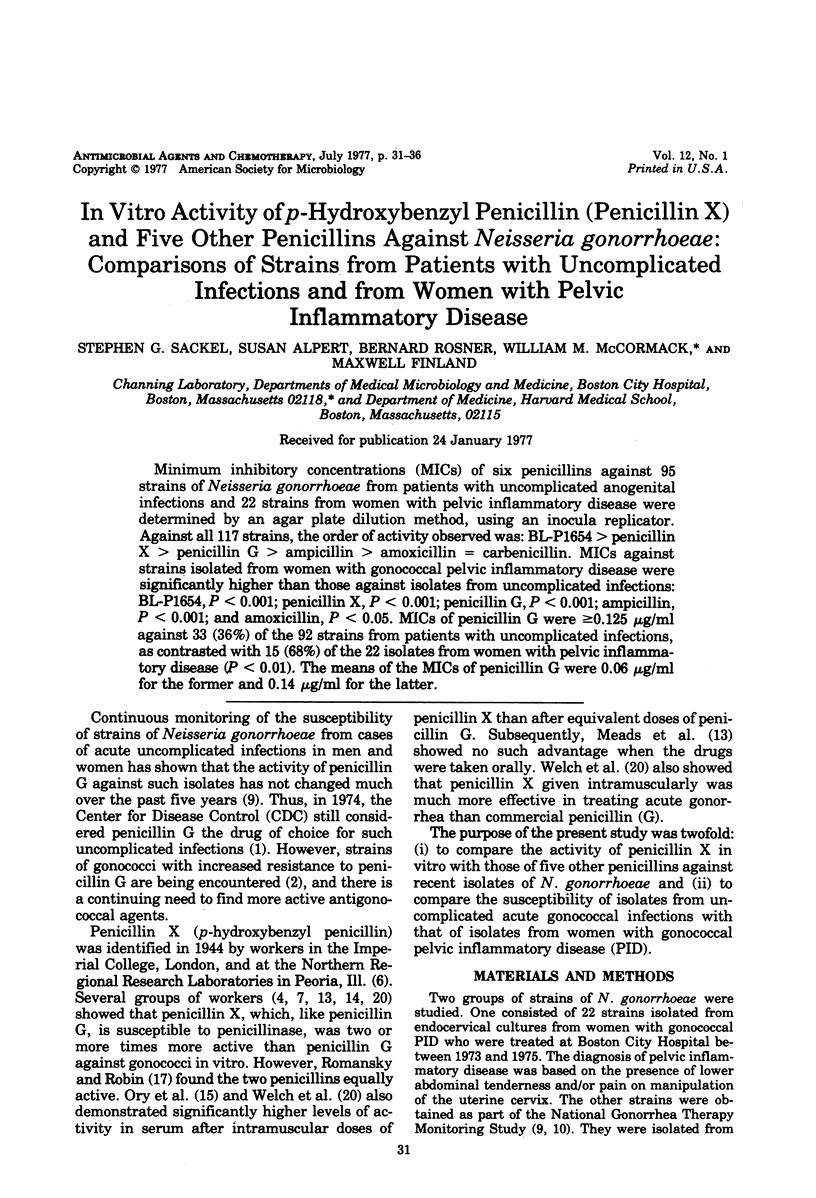
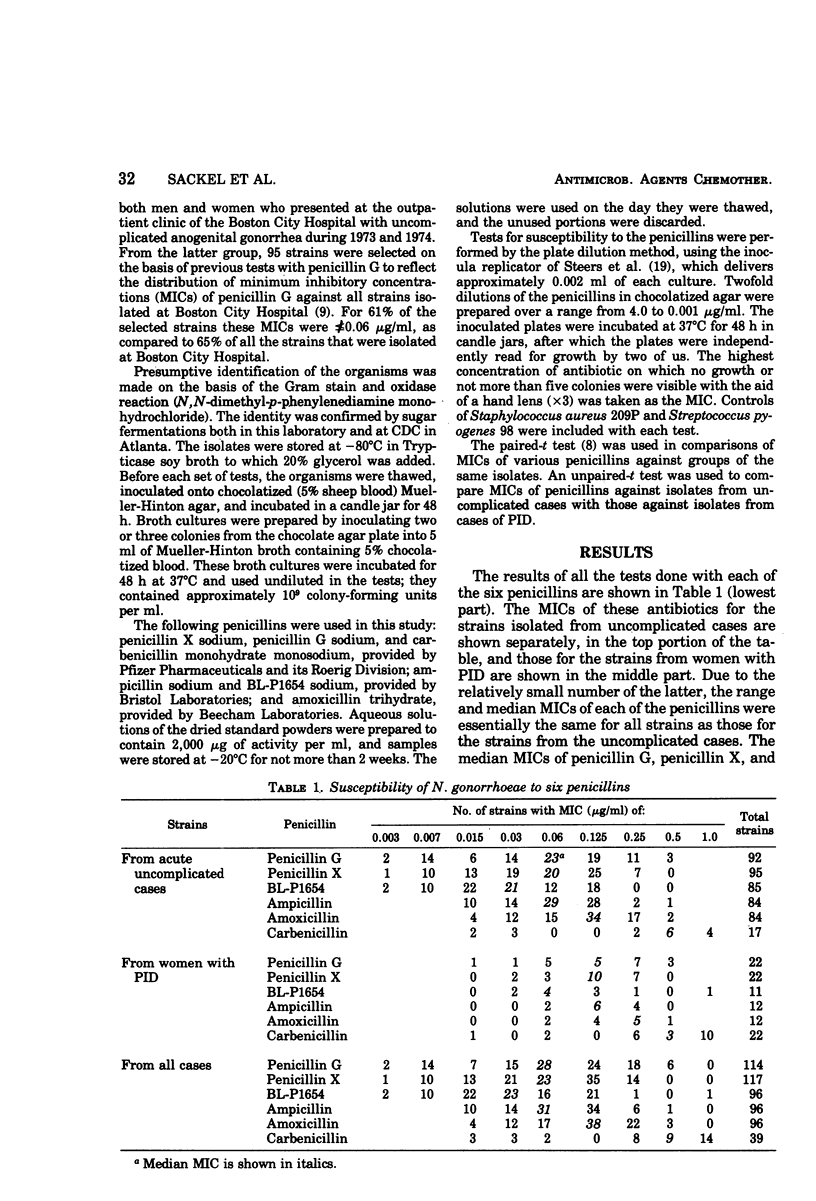
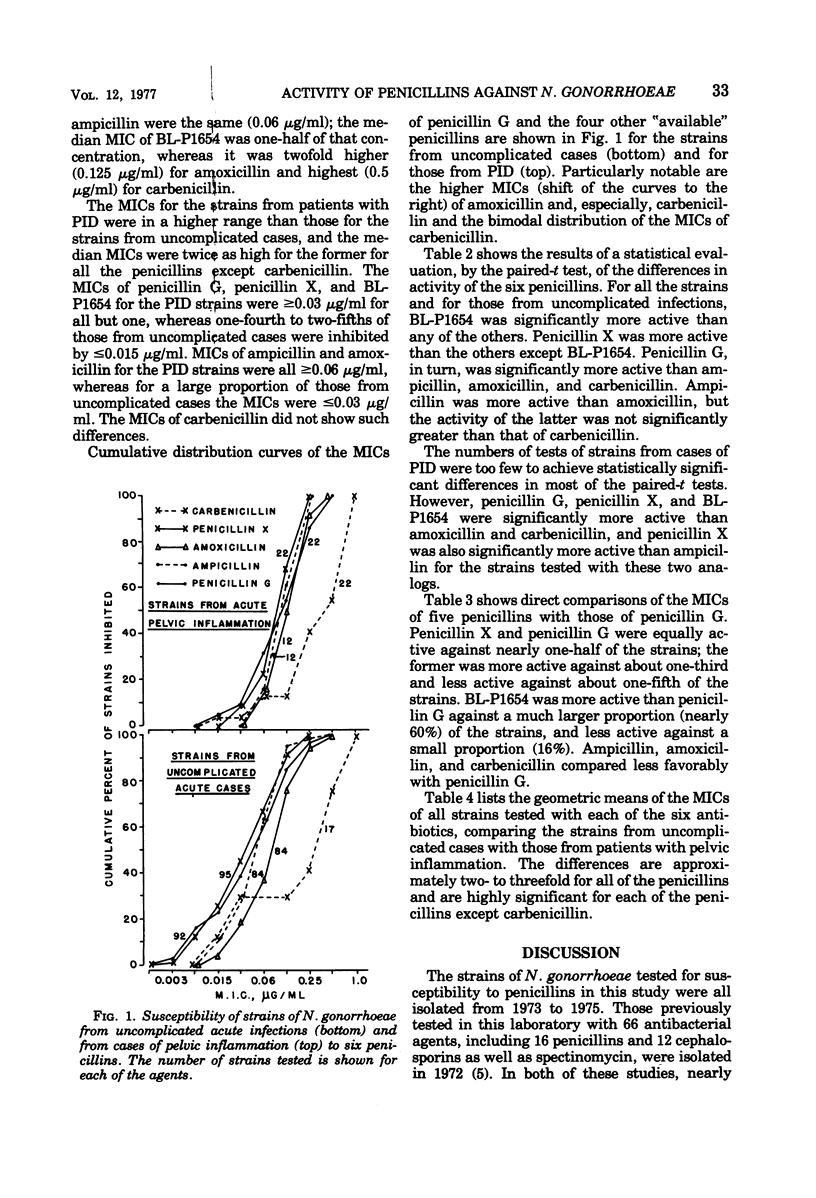
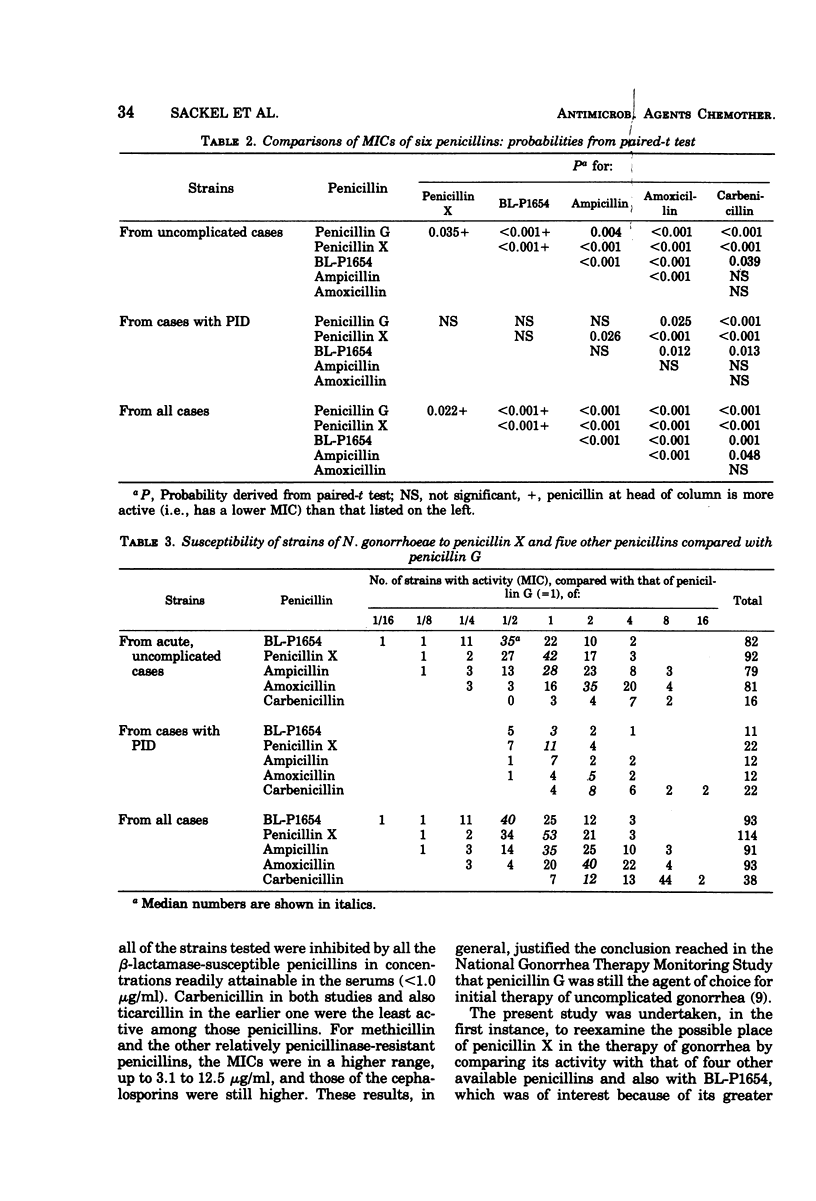
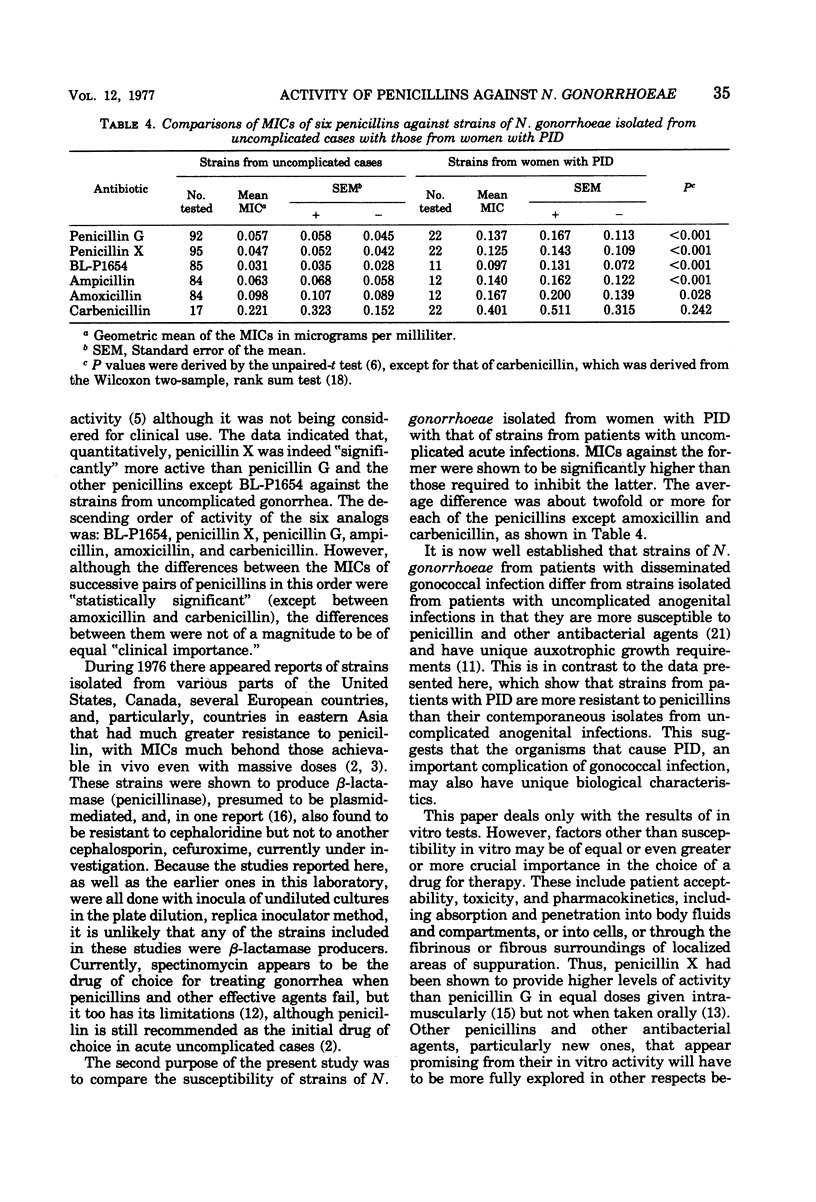
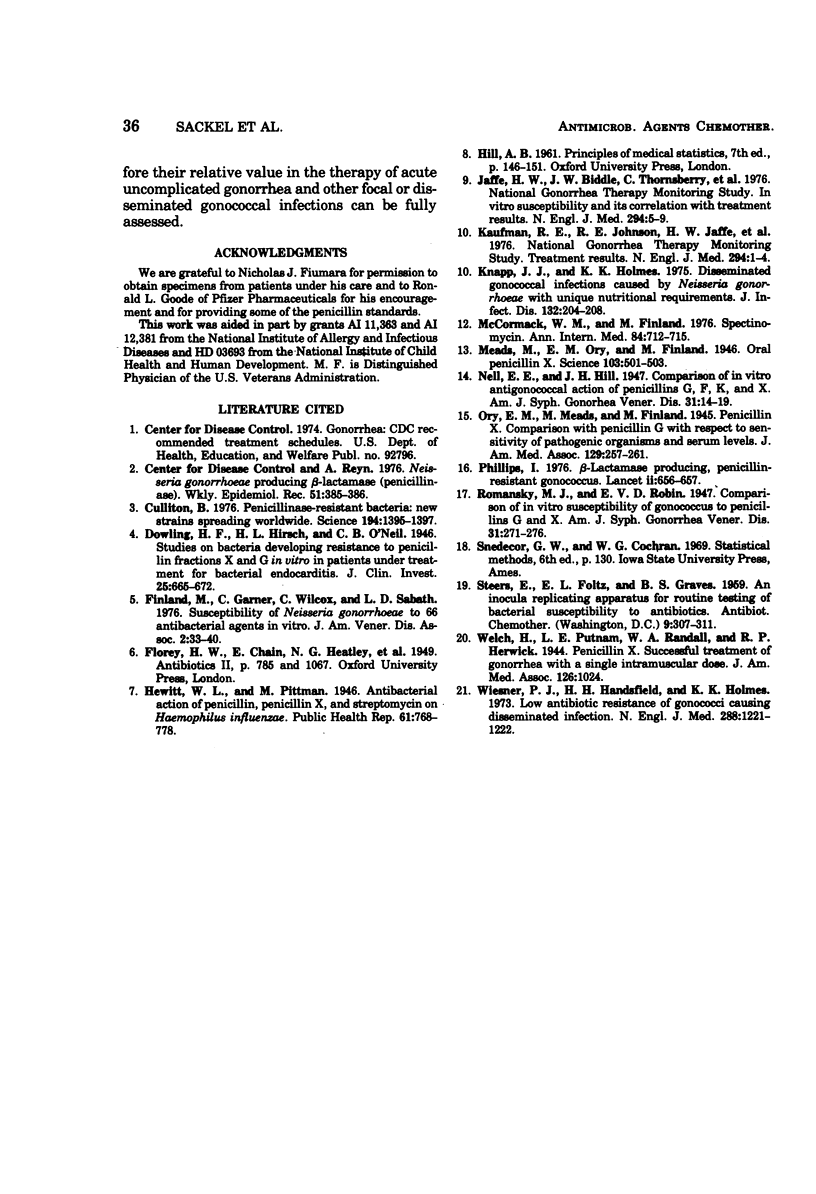
Selected References
These references are in PubMed. This may not be the complete list of references from this article.
- Culliton B. J. Penicillin-resistant gonorrhea: new strain spreading worldwide. Science. 1976 Dec 24;194(4272):1395–1397. doi: 10.1126/science.194.4272.1395. [DOI] [PubMed] [Google Scholar]
- Dowling H. F., Hirsh H. L., O'neil C. B. STUDIES ON BACTERIA DEVELOPING RESISTANCE TO PENICILLIN FRACTIONS X AND G IN VITRO AND IN PATIENTS UNDER TREATMENT FOR BACTERIAL ENDOCARDITIS. J Clin Invest. 1946 Sep;25(5):665–672. doi: 10.1172/JCI101747. [DOI] [PMC free article] [PubMed] [Google Scholar]
- Jaffe H. W., Biddle J. W., Thornsberry C., Johnson R. E., Kaufman R. E., Reynolds G. H., Wiesner P. J. National gonorrhea therapy monitoring study: in vitro antibiotic susceptibility and its correlation with treatment results. N Engl J Med. 1976 Jan 1;294(1):5–9. doi: 10.1056/NEJM197601012940102. [DOI] [PubMed] [Google Scholar]
- Knapp J. S., Holmes K. K. Disseminated gonococcal infections caused by Neisseria gonorrhoeae with unique nutritional requirements. J Infect Dis. 1975 Aug;132(2):204–208. doi: 10.1093/infdis/132.2.204. [DOI] [PubMed] [Google Scholar]
- McCormack W. M., Finland M. Drugs five years later. Spectinomycin. Ann Intern Med. 1976 Jun;84(6):712–716. doi: 10.7326/0003-4819-84-6-712. [DOI] [PubMed] [Google Scholar]
- Meads M., Ory E. M., Finland M. Oral Penicillin X. Science. 1946 Apr 26;103(2678):501–503. doi: 10.1126/science.103.2678.501. [DOI] [PubMed] [Google Scholar]
- Phillips I. Beta-lactamase-producing, penicillin-resistant gonococcus. Lancet. 1976 Sep 25;2(7987):656–657. doi: 10.1016/s0140-6736(76)92466-1. [DOI] [PubMed] [Google Scholar]
- Wiesner P. J., Handsfield H. H., Holmes K. K. Low antibiotic resistance of gonococci causing disseminated infection. N Engl J Med. 1973 Jun 7;288(23):1221–1222. doi: 10.1056/NEJM197306072882308. [DOI] [PubMed] [Google Scholar]


